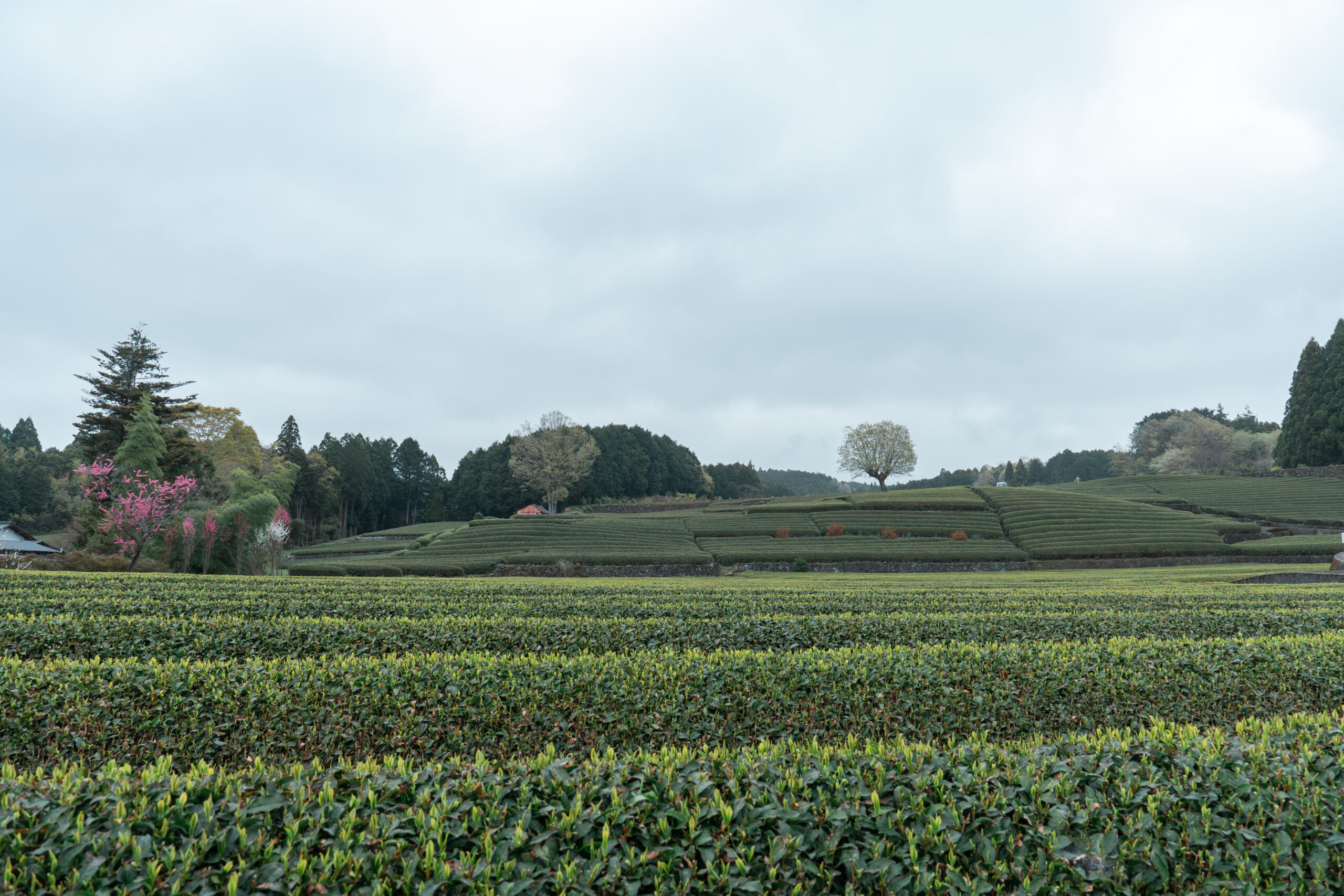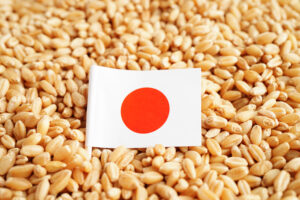Japan is a nation steeped in tradition, where the delicate art of tea cultivation flourishes amid picturesque landscapes. The verdant green tea plantations that dot the countryside are not only a feast for the eyes but also a gateway into a rich cultural heritage. As you traverse the rolling hills, you’ll find that each tea leaf tells a story of meticulous care, history, and a commitment to sustainability. Join us on a journey to explore Japan’s green tea plantations, where nature and tradition harmoniously intertwine.
Discovering the Allure of Japan’s Green Tea Plantations
The charm of Japan’s green tea plantations is undeniable. Nestled in the mountains and valleys, these plantations boast a stunning view that transforms with the seasons—from lush green in spring to a vibrant tapestry of colors in autumn. Visitors are often struck by the serene atmosphere, punctuated only by the gentle rustling of tea leaves in the breeze and the distant sounds of nature. The authenticity of these landscapes offers a perfect backdrop for both relaxation and education, inviting tea enthusiasts and curious travelers alike to delve deeper into the world of Japanese tea.
Walking through the rows of tea plants, one can witness the meticulous care that goes into cultivating these leaves. Farmers, often seen tending to their fields, embody the spirit of dedication that defines this industry. The experience of strolling through the plantations is one of connection—to the land, the people, and the traditions that have thrived here for centuries. In many ways, the plantations themselves are living museums, showcasing the evolution of tea cultivation and its significance to Japanese culture.
Moreover, the allure of these plantations extends beyond the visual. The air is infused with the fresh aroma of green tea, and the taste of freshly brewed tea—often offered during tours—adds a sensory dimension to the experience. Sipping on a cup of high-quality green tea while surrounded by the very plants that produced it creates a unique bond between the visitor and the land. This immersive experience is a key reason why tea tourism in Japan is on the rise, attracting people from all over the globe.
In addition to the picturesque settings, many plantations are committed to educating their visitors. Guided tours often include explanations of the various tea plant varieties and the intricate processes involved in tea production. This engagement fosters a deeper appreciation for the craftsmanship behind each cup of tea, transforming a simple beverage into a profound cultural symbol.
Furthermore, the allure of Japan’s green tea plantations is amplified by the availability of seasonal events and festivals that celebrate tea culture. These events invite locals and tourists alike to participate in traditional tea ceremonies, where the artistry of tea preparation is on full display. Engaging with the community during these festivities enriches the overall experience and fosters a sense of belonging among visitors.
Ultimately, Japan’s green tea plantations offer not just a visual feast, but an experience steeped in culture, history, and community—a journey that resonates long after one’s visit.
The Rich History Behind Japan’s Tea Culture
To understand Japan’s green tea plantations, one must first delve into the rich history of tea culture in the country. Tea was introduced to Japan from China in the early 9th century, and it quickly became an integral part of Japanese culture and society. Initially consumed primarily by Buddhist monks and the aristocracy for its stimulant properties, tea gradually become more widespread as its health benefits were recognized.
As the centuries progressed, tea transitioned from a luxury good to a staple of everyday life. The 12th century saw the rise of the Kamakura period, during which matcha—finely ground powdered green tea—gained popularity. The introduction of the tea ceremony, or "chanoyu," during the 15th century marked a significant development in Japanese tea culture, emphasizing aesthetics, harmony, and mindfulness. This ceremonial aspect of tea drinking has influenced the cultivation and processing of tea ever since.
In the Edo period (1603-1868), the commercial cultivation of tea expanded, leading to various regions specializing in different tea types. The establishment of tea houses and markets transformed tea from a personal ritual to a communal experience, deepening its impact on Japanese society. The introduction of Sencha, a method of steaming and rolling tea leaves, during this period also diversified Japan’s tea offerings.
Following the Meiji Restoration in the late 19th century, Japanese tea gained international recognition, and exports surged. This newfound global appreciation brought about innovations in tea cultivation and processing, as farmers sought to improve quality to meet international standards. The ensuing years saw further developments in agricultural techniques and a renewed focus on the health benefits of green tea, reinforcing its place in Japanese culture.
Today, Japan’s tea culture remains vibrant and diverse, with a harmonious blend of traditional practices and modern influences. The dedication to sustainability and quality in tea production has become increasingly relevant, as both domestic and international consumers seek to understand the origins of their food and beverages. This continued evolution of tea culture ensures that Japan’s green tea plantations remain a vital part of its cultural heritage.
In essence, the history of Japanese tea culture is a testament to its resilience and adaptability, a narrative that continues to unfold in the lush fields of green tea plantations across the country.
Varieties of Green Tea: From Matcha to Sencha
Japan is renowned for its diverse range of green tea varieties, each with its unique flavor profile, aroma, and health benefits. Among the most famous is matcha, a finely ground powder made from shade-grown tea leaves. This vibrant green tea has gained international popularity due to its versatility and rich nutritional content. Matcha is traditionally prepared by whisking the powder with hot water, resulting in a frothy and energizing drink that has found its way into lattes, desserts, and even savory dishes.
Another popular variety is Sencha, which accounts for approximately 70% of Japan’s tea production. Unlike matcha, Sencha is made from steamed tea leaves that are rolled and dried. It has a refreshing, grassy flavor with a hint of sweetness, making it the go-to choice for many Japanese households. The quality of Sencha can vary significantly based on the cultivation methods, with higher-grade Sencha offering more complex flavors and aromas.
Gyokuro is another high-quality green tea characterized by its unique cultivation process. The tea plants are shaded for several weeks before harvest, leading to a sweeter taste and vibrant green color. Gyokuro is often regarded as one of the finest teas in Japan and is typically brewed at lower temperatures to enhance its delicate flavors. This tea is often enjoyed in more formal settings, reflecting its status as a premium product.
Hojicha, on the other hand, is a roasted green tea that offers a completely different flavor profile. The roasting process gives Hojicha its distinctive reddish-brown color and a warm, nutty aroma. This tea is low in caffeine, making it a popular choice for evening consumption. Its unique taste has garnered a dedicated following both in Japan and abroad.
Genmaicha, often referred to as "popcorn tea," is a delightful blend of green tea and roasted brown rice. This combination results in a comforting tea with a toasty flavor and a hint of sweetness. Genmaicha is particularly popular among those seeking a milder tea experience, and it can be enjoyed both hot and cold.
Each of these varieties reflects the intricate relationship between the terroir, cultivation practices, and the skill of the tea farmers. Understanding the nuances of these different green teas not only enhances the tasting experience but also deepens the appreciation for the dedication and artistry involved in their production.
The Ideal Climate: Why Japan Thrives in Tea Production
Japan’s unique geography and climate create ideal conditions for tea cultivation, contributing to the country’s reputation as a premier tea producer. The archipelago’s diverse landscape, characterized by mountainous regions, fertile plains, and a temperate climate, allows for a variety of tea types to thrive. The combination of rich volcanic soil and abundant rainfall nourishes the tea plants, resulting in high-quality leaves with distinct flavors.
The climate in Japan is generally characterized by four distinct seasons, each influencing the growth and harvesting of tea. Spring, in particular, is pivotal for tea production, as it marks the beginning of the growing season. The fresh and crisp air, combined with ample sunlight, encourages the rapid growth of tender tea leaves that yield the most sought-after harvests. The timing of the first flush, or the initial harvest of the year, is crucial for flavor and quality.
Additionally, Japan’s mountainous regions, such as Shizuoka and Uji, benefit from cooler temperatures at higher altitudes. These cooler conditions slow down the growth of tea plants, allowing for a concentration of flavors and nutrients. The result is a richer, more complex profile that distinguishes Japanese green teas from those grown in hotter, less temperate regions.
The cultural significance of tea in Japan also drives a commitment to maintaining optimal growing conditions. Farmers meticulously select planting locations, often positioning their fields on slopes to maximize sunlight exposure and prevent waterlogging. Such practices showcase the deep connection between the land and its stewards, ensuring that the quality of the tea remains paramount.
Moreover, the increasing impacts of climate change have prompted many tea farmers to innovate and adapt. Practices such as diversifying crops, improving irrigation systems, and implementing eco-friendly pest management strategies are becoming more common. This proactive approach not only safeguards the tea industry but also underscores the enduring relationship between the environment and tea cultivation.
Ultimately, Japan’s climate and geography are intrinsic to the nation’s tea culture, embodying the harmony between nature and human endeavor. The result is not only a product of exceptional quality but also a lasting legacy that continues to thrive in the face of modern challenges.
Traditional Farming Techniques: A Closer Look
The cultivation of tea in Japan is as much an art as it is a science, with traditional farming techniques passed down through generations. Farmers utilize a combination of methods honed over centuries to ensure that each tea leaf is nurtured to perfection. One of the most distinctive practices is the careful shading of tea plants, particularly for matcha and Gyokuro. By covering the plants with cloth or bamboo mats, farmers can control the amount of sunlight the leaves receive, enhancing flavor and nutritional content.
Another hallmark of traditional tea farming is the meticulous hand-picking of tea leaves. Farmers often harvest only the youngest, most tender leaves and buds, which are believed to yield the best flavor. This labor-intensive process ensures high quality but requires skill and experience. Each harvest is a testament to the dedication and craftsmanship of the farmers, highlighting their intimate knowledge of the plants and their growth cycles.
Crop rotation and intercropping are also common practices that promote soil health and biodiversity. Many farmers plant companion crops alongside their tea plants, which can help to naturally repel pests and improve soil nutrients. This approach not only enhances the quality of the tea but also contributes to the overall health of the ecosystem in which the tea is grown.
Furthermore, the timing of the harvest is critical. The first flush of tea leaves, typically harvested in late April to early May, is sought after for its delicate flavor and vibrant color. Farmers pay close attention to meteorological conditions, such as temperature and rainfall, to determine the optimal time for harvesting. This keen observation of nature reflects a deep respect for the environment and an understanding of its rhythms.
In recent years, there has been a resurgence of interest in traditional farming methods, as consumers increasingly seek organic and authentically produced teas. Many farmers have embraced organic farming practices, eschewing synthetic fertilizers and pesticides in favor of natural alternatives. This shift not only benefits the environment but also ensures the longevity of tea cultivation.
Through these traditional techniques, Japanese tea farmers play a vital role in preserving cultural heritage while adapting to modern demands. Their commitment to quality and sustainability is evident in every sip of tea, making each cup not just a beverage, but a celebration of centuries of tradition and craftsmanship.
Sustainable Practices in Japan’s Tea Industry
Sustainability has become a key focus in Japan’s tea industry, as producers recognize the importance of protecting the environment while ensuring high-quality tea production. The commitment to sustainable practices is evident in various aspects of tea cultivation, processing, and packaging. Many farmers have adopted organic farming methods, eliminating the use of synthetic pesticides and fertilizers in favor of natural alternatives. This not only preserves soil health but also enhances the flavor and quality of the tea.
Water conservation is another critical component of sustainable tea farming. With Japan’s changing climate leading to unpredictable weather patterns, farmers are increasingly implementing efficient irrigation systems that reduce water use while maintaining crop health. Techniques such as rainwater harvesting and drip irrigation allow farmers to optimize water resources without compromising the quality of their tea.
Additionally, the use of renewable energy sources is gaining traction in the tea industry. Many tea processing facilities are investing in solar panels and other renewable energy technologies to power their operations. This shift not only reduces the carbon footprint associated with tea production but also sets a positive example for the broader agricultural community.
Community engagement is also a vital aspect of sustainability in Japan’s tea industry. Many tea producers prioritize local partnerships and fair trade practices, ensuring that their farmers receive fair compensation for their labor. This commitment to social responsibility fosters a sense of community and empowers local farmers, enabling them to invest in their farms and families.
Furthermore, educational programs aimed at promoting sustainable practices among farmers are increasingly common. These initiatives provide resources and training on organic cultivation, soil management, and pest control, empowering farmers to adopt more environmentally friendly methods. As awareness of sustainability grows, the hope is that more producers will embrace these practices, ultimately leading to a more resilient tea industry.
In summary, Japan’s tea industry is at the forefront of sustainable agricultural practices, striving to balance quality production with environmental stewardship. As consumers become more conscious of the origins of their food and beverages, the emphasis on sustainability will likely continue to shape the future of tea cultivation in Japan.
Seasonal Harvest: Timing and Techniques Explained
The seasonal nature of tea harvesting in Japan plays a crucial role in the flavor and quality of the final product. The timing of these harvests is carefully orchestrated, with farmers closely monitoring environmental conditions to determine the optimal moments for picking. The first flush, or the spring harvest, typically occurs in late April to early May and is considered the most prestigious due to the tender leaves produced during this period.
During the first flush, farmers selectively hand-pick the youngest leaves and buds, which yield a delicate flavor and vibrant color. This meticulous process not only ensures the highest quality but also reflects the farmers’ deep knowledge of their tea plants and the conditions needed for optimal growth. The result is a tea that embodies the essence of the season—a reflection of the land and the care invested in its cultivation.
As the seasons progress, subsequent harvests occur, each with its unique characteristics. The summer harvest, for example, yields more robust leaves that are typically used for Sencha and other green teas. While these leaves may lack the delicacy of the spring harvest, they often possess a deeper, more intense flavor profile. Farmers adapt their techniques according to the time of year, with adjustments made in processing to highlight the specific qualities of each harvest.
In autumn, the focus shifts to preparing the tea plants for winter. Many farmers engage in practices such as pruning, which helps to promote healthy growth for the following year. The timing of these activities is critical, as improper pruning can stunt the growth of the plants and affect future harvests. This seasonal rhythm of planting, harvesting, and caring for the land creates a harmonious cycle that speaks to the deep connection between farmers and their crops.
Climate fluctuations and environmental factors can significantly impact the timing and success of the harvest. Farmers must remain vigilantly aware of conditions, such as rainfall and temperature, which can affect the growth and quality of the tea leaves. For instance, a late frost or unexpected heatwave can disrupt the delicate balance needed for optimal growth. As a result, adaptability and experience become essential traits for successful tea farmers.
In conclusion, the seasonal harvest of Japanese tea is a complex and nuanced process that requires both skill and intuition. By understanding the timing and techniques involved in each harvest, consumers can gain a deeper appreciation for the craftsmanship behind every cup of tea. Each sip becomes a celebration of the seasons, reflecting the unique characteristics of the land and the dedication of those who cultivate it.
The Art of Tea Processing: From Leaf to Cup
The journey from tea leaf to cup is a meticulous process that requires a blend of tradition and innovation. Once harvested, the tea leaves undergo several critical steps to transform them into the beverage that has captivated hearts and palates worldwide. The processing methods vary according to the type of tea being produced, but the overarching goal remains the same: to preserve the delicate flavors and aromas inherent in the leaves.
The first step in processing green tea is steaming, which serves to prevent oxidation and preserve the vibrant green color. This method is primarily used for Sencha and Gyokuro, where the leaves are subjected to steam for a short period—typically between 30 seconds to several minutes—depending on the desired flavor profile. This process also softens the leaves, making them easier to shape during subsequent rolling.
Following steaming, the leaves are rolled to release essential oils and flavor compounds. This rolling process can vary in technique and duration, resulting in different shapes and textures of the leaves. For instance, some teas are rolled into tight balls, while others are shaped into longer, flat leaves. Each method influences the final taste, creating a diverse array of flavors and aromas that characterize Japanese green teas.
After rolling, the leaves are dried to remove moisture and lock in flavor. This step is crucial in preventing spoilage and preparing the tea for storage and distribution. The drying process can involve various techniques, including hot air drying or pan-firing, each imparting unique characteristics to the final product. For example, pan-firing can create a toasty flavor that enhances the overall tasting experience.
Once the tea is dried, it undergoes sorting and grading, where leaves are categorized based on size, appearance, and quality. This step is essential for ensuring that only the finest leaves make it to market. The grading process is often a labor-intensive task, requiring skilled workers who can discern subtle differences in quality.
Finally, the tea is packaged and prepared for distribution. Many producers are increasingly adopting eco-friendly packaging solutions, reflecting the industry’s commitment to sustainability. The journey from leaf to cup culminates in the preparation of the tea itself, where the brewing process can significantly impact the final taste. Factors such as water temperature, steeping time, and the quality of water used all play a vital role in bringing out the flavors locked within the leaves.
In conclusion, the art of tea processing is a complex dance of tradition and innovation, where each step contributes to the final experience of enjoying a cup of Japanese green tea. From steaming and rolling to drying and brewing, the care and attention given at each stage is a testament to the heritage of tea cultivation in Japan.
Exploring the Scenic Regions of Tea Plantations
Japan’s tea plantations are not only centers of agricultural excellence; they are also breathtakingly beautiful landscapes that draw visitors from around the world. Each region has its own unique character, influenced by its geography, climate, and cultural heritage. Exploring these scenic areas offers a chance to connect with nature and experience the serenity of Japan’s countryside.
Shizuoka, often dubbed the "tea capital" of Japan, is home to vast rolling hills covered in lush tea fields. The picturesque views of Mount Fuji in the background make this region a must-visit for tea enthusiasts. Visitors can wander through the plantations, participate in tea tastings, and even tour processing facilities to see the journey of tea from leaf to cup. Shizuoka’s commitment to both traditional and innovative practices has solidified its reputation as a premier destination for green tea lovers.
Another notable region is Uji, located near Kyoto. Uji is famed for producing some of the highest-quality matcha and Gyokuro in the country. The city boasts several historic tea houses and temples that offer tea ceremonies, providing visitors with an authentic cultural experience. The scenic landscape, characterized by terraced tea gardens and tranquil rivers, invites guests to slow down and appreciate the beauty around them.
Miyazaki, situated on the southern island








